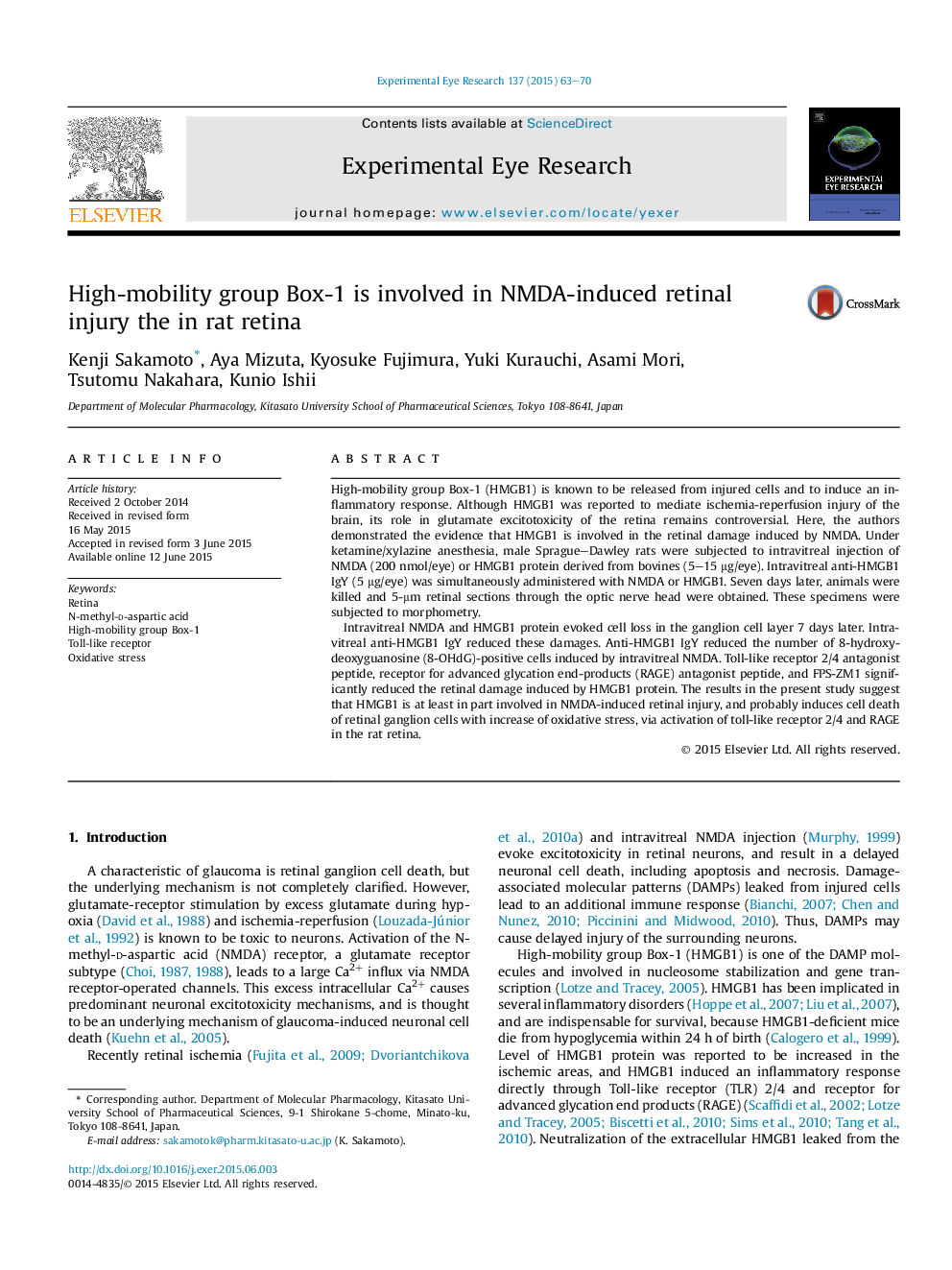| کد مقاله | کد نشریه | سال انتشار | مقاله انگلیسی | نسخه تمام متن |
|---|---|---|---|---|
| 6196712 | 1602585 | 2015 | 8 صفحه PDF | دانلود رایگان |

- Intravitreal High-mobility group Box-1 (HMGB1) is toxic in the rat retina in vivo.
- TLR 2/4 and RAGE are involved in the HMGB1-induced retinal injury in rats in vivo.
- HMGB1 evoked a slower form of cell death in GCL, compared to NMDA-induced cell death, especially in the central retina.
- The neutralization antibody for HMGB1 prevents the NMDA-induced neurotoxicity in the rat retina in vivo.
High-mobility group Box-1 (HMGB1) is known to be released from injured cells and to induce an inflammatory response. Although HMGB1 was reported to mediate ischemia-reperfusion injury of the brain, its role in glutamate excitotoxicity of the retina remains controversial. Here, the authors demonstrated the evidence that HMGB1 is involved in the retinal damage induced by NMDA. Under ketamine/xylazine anesthesia, male Sprague-Dawley rats were subjected to intravitreal injection of NMDA (200 nmol/eye) or HMGB1 protein derived from bovines (5-15 μg/eye). Intravitreal anti-HMGB1 IgY (5 μg/eye) was simultaneously administered with NMDA or HMGB1. Seven days later, animals were killed and 5-μm retinal sections through the optic nerve head were obtained. These specimens were subjected to morphometry.Intravitreal NMDA and HMGB1 protein evoked cell loss in the ganglion cell layer 7 days later. Intravitreal anti-HMGB1 IgY reduced these damages. Anti-HMGB1 IgY reduced the number of 8-hydroxy-deoxyguanosine (8-OHdG)-positive cells induced by intravitreal NMDA. Toll-like receptor 2/4 antagonist peptide, receptor for advanced glycation end-products (RAGE) antagonist peptide, and FPS-ZM1 significantly reduced the retinal damage induced by HMGB1 protein. The results in the present study suggest that HMGB1 is at least in part involved in NMDA-induced retinal injury, and probably induces cell death of retinal ganglion cells with increase of oxidative stress, via activation of toll-like receptor 2/4 and RAGE in the rat retina.
Journal: Experimental Eye Research - Volume 137, August 2015, Pages 63-70